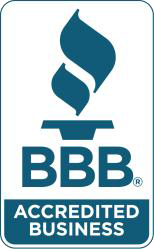
Your hearing aids aren’t sounding right even though you recently changed the batteries. Things just don’t sound right, like they’re a little bit muffled and distant. It’s like you can’t hear the full sound you’re supposed to be receiving. When you try to diagnose the issue with a basic Google search, the most plausible answer seems to be a low battery. Which frustrates you because you charge the batteries every night.
But here you are with a group of friends and you can’t really hear their conversation. This is precisely the situation you bought hearing aids to avoid. You may want to check one more possibility before you become too aggravated about your hearing aids: earwax.
You’re Hearing Aids Reside in Your Ears
Your ears are the place where your hearing aids live under normal circumstances. Even when you wear an over-the-ear model, there’s at least contact with your ear canal. Other models are manufactured to be positioned inside the ear canal for ideal performance. Earwax will be an ever-present neighbor regardless of where your hearing aid is situated.
Earwax Guards
Now, earwax does a lot of great things for the health of your ears ((many infection can actually be avoided because of the antibacterial and anti-fungal properties of earwax, according to various studies). So earwax can actually be a positive thing.
But the interaction between hearing aids and earwax isn’t always so good–the standard functionality of your hearing aid can be impeded by earwax, peculiarly the moisture. The good thing is, that earwax is predictable and manufacturers are well aware of it.
So modern hearing aids have safeguards, known as wax guards, created to stop earwax from interfering with the general performance of your device. And the “weak” sound may be brought about by these wax guards.
Wax Guard Etiquette
There is a small piece of technology in your hearing aid known as a wax guard. The concept is that the wax guard allows sound to get through, but not wax. So that your hearing aid can continue to work efficiently, a wax guard is essential. But there are some circumstances where the wax guard itself could cause some issues:
- A professional check and clean is needed: At least once a year you need to get your hearing aid professionally cleaned and checked to be certain it’s functioning properly. You should also think about getting your hearing checked regularly to make sure your hearing hasn’t changed at all.
- It’s been too long since the wax guard has been cleaned: Cleaning your wax guard should be a monthly (or so) maintenance task. A wax guard blocks the wax but it can become clogged and just like any type of filter, it has to get cleaned. Sound waves can be blocked if earwax is plugging up the wax guard and every now and then, you will need to clean it.
- When you got your new wax guards, you got the wrong one: Each model and maker has a different wax guard. Sound that is “weak” can be the outcome if you buy the wrong wax guard for your model.
- You haven’t replaced your wax guard for some time: Wax guards wear out like any other filter. A wax guard can only be cleaned so many times. You may need to get a new wax guard if cleaning no longer works (so that you can make this smoother, you can purchase a toolkit made specially for this).
- You have a dirty hearing aid shell: When you’re changing your earwax guard, it’s important that your hearing aid shell be properly cleaned also. If earwax is covering your device, it’s possible, while you’re changing the wax guard, some of the earwax gets into the interior of the hearing aid (and, naturally, this would hamper the function of the hearing aid).
If you get a new hearing aid guard, it will probably come with instructions, so it’s a good plan to follow those instructions the best you can.
I Replaced my Wax Guard, What’s Next?
Once you’ve changed over your earwax guard, your hearing aids should start providing clearer sounds. You’ll be able to hear (and follow) conversations again. And that can be a big relief if you’ve been frustrated with your (fully charged) hearing aid.
Much like any complex device, hearing aids do call for some routine upkeep, and there’s definitely a learning curve involved. So don’t forget: if your hearing aid is sounding weak and your batteries are fully charged, it may be time to change your earwax guard.










